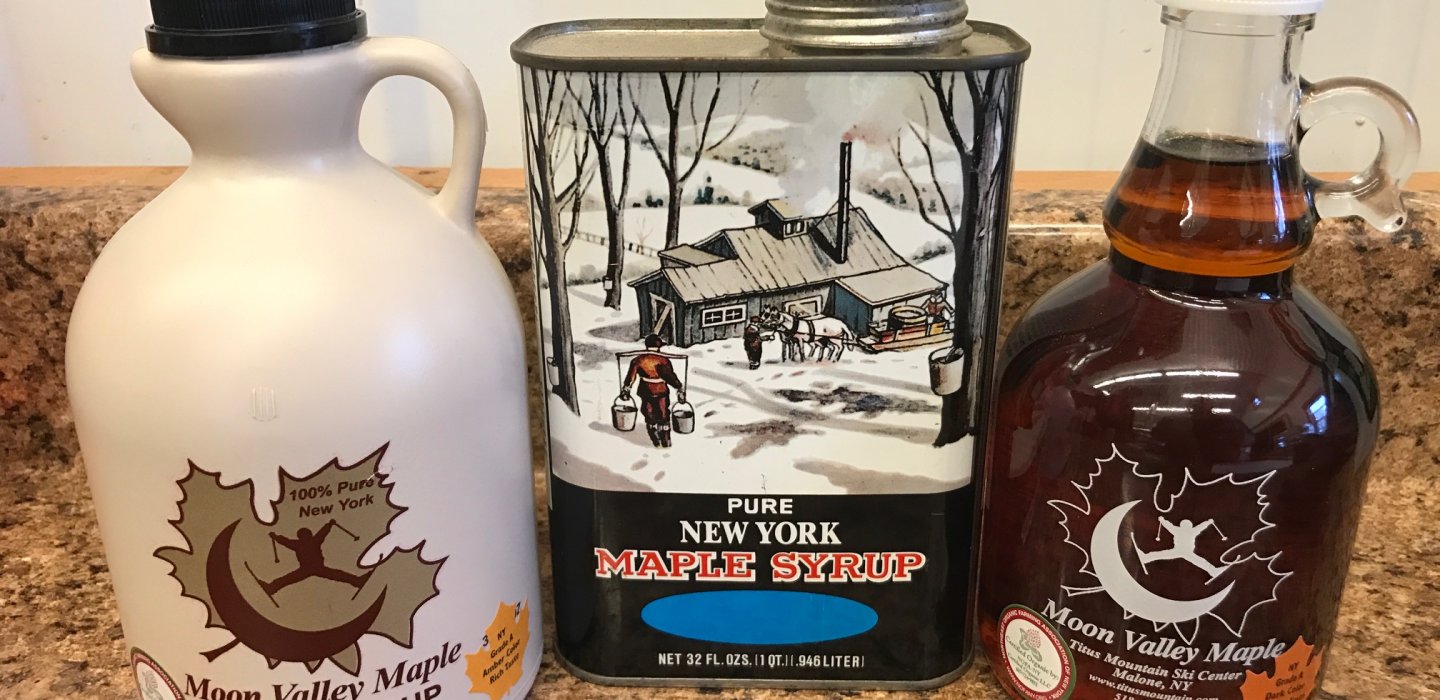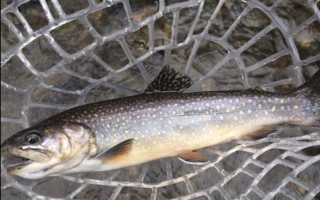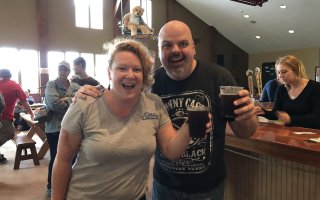
I spent my formidable years growing up in downstate New York, closer to the city than Canada by a long shot. Maple syrup was accessible and available, with probably 20 sugarhouses within a 50-mile radius. I never knew, however, how maple syrup could be a way of life until I moved to the Malone area, where I can easily find over 70 sugarhouses within a 50-mile radius.
I carry on a family tradition of Sunday breakfasts when I can, and this past weekend was the first time in a while that I could cook up my favorite French toast and bacon meal. I had all the good ingredients available: nice soft bread, a little bit of eggnog, the best tasting slab bacon from locally owned Glazier's (read about my love affair with their Glazier Dog here), and locally boiled and bottled syrup from Moon Valley Maple.
Except... I didn't have enough syrup. Luckily, I know that guys who run Moon Valley Maple and knew that they just might be boiling fresh syrup, so I hopped in the car and headed up to Titus Mountain, the home of Moon Valley Maple, to replenish my stock.
When I arrived at the sugarhouse, I was pleased to see the puffs of steam coming from the chimney, meaning that there was some fresh syrup to be had! As I opened the door to the sugarhouse, I immediately smelled the soft subtlety of maple in the air and knew that I had come at the perfect time.
I was greeted by Lucien White, sugarhouse manager, who was in the process of looking through a weird View-Master-type thing. After the normal pleasantries, I asked him what he was doing. Apparently, the View-Master-type thing was used in identifying the grade of Maple Syrup, ranging from "Golden Color" to "Very Dark Color." Being a maple syrup novice, I told him what I needed syrup for and what grade I would like. Turns out, I subscribed to two very popular myths that Lucien dispelled for me.
Myth #1: The lighter the syrup, the better the taste and quality
Just as beauty is in the eye of the beholder, so is taste. However, if we take the philosophy out of it, there is a myth out there that the lighter the syrup the better the taste. The reality is that, just like fine wines, certain syrups pair best with specific types of foods or cooking.
There are four ratings for Maple Syrup: "Golden Color; Delicate Taste," "Amber Color; Rich Taste," "Dark Color; Robust Taste," and "Very Dark Color; Strong Taste."
When I asked for the Golden Color syrup for my breakfast, I received a smirk from Lucien and a recommendation to go with an Amber Color, perhaps even a Dark Color. Luckily for me, the current batch that was being boiled was Amber and I could get a sample. Turns out, Lucien was right.
He explained to me that the basic difference in colors was how "maple-y" the flavor. In fact, imitation maple syrup tries to emulate the taste of a darker pure syrup because most people use imitation syrup to put on things such as pancakes, waffles, and my favorite French Toast and bacon, and they want that taste. Most people are actually more familiar with the taste of darker syrup, but when they venture into pure maple syrup they opt for the Golden Color, assuming it is the highest quality.
I went on to ask what the other grades were good for. Lucien explained that Golden Color has just a hint of maple, so it's a good addition to things like coffee or on ice cream. It's a subtle addition of sweet flavor. The darker the color, the better for cooking because the maple flavor doesn't "cook off," so using it as a flavoring for sauces and marinades would be a good route to go. And the amber color, a nice sweet spot in the middle, is great for that kick of maple flavor that most people enjoy on their favorite breakfast items.
At this point I had learned more about maple syrup than I had in my years of eating the stuff so felt like I should ask the professional a silly question: why make the other grades of syrup, then, if the flavor is best the darker it is?
Myth #2: Boiling syrup longer makes it darker
At this question, I received another smirk. "We are one of the few places in the world that can make maple syrup," Lucien said, "and it always makes me laugh how little people know about it, even in this area." He was referencing, of course, that the Eastern U.S. and Eastern Canada produce over 80% of the global supply. "So, I'm glad you bring that up."
The grade (and color) of syrup has less to do with how long you boil it and more to do with several other factors. In fact, how long you boil syrup generally only affects the water content of the syrup. Too much water in the syrup and it spoils; too little water in it and it starts to crystallize.
What actually determines the flavor, grade, and color of the syrup is a collage of many things such as soil type, tree genetics, weather conditions, time of season, and processing technique. Earlier in the season you will get a lighter syrup than later in the season. If the sap tends to fluctuate between flowing and not flowing during the season you might get a darker syrup because of build-up and settling in the lines. Collecting syrup and holding it before processing it will also cause a darker syrup. And, even storing it in plastic bottles over glass bottles can affect the color!
Lucien went on to explain that the Golden Color of maple syrup is relatively new when it comes down to the history of syrup. The reason that most people are more familiar with the darker flavor is because historically it has been the most readily available grade. Advancements in equipment have made creating a golden color easier than it was in the past, from being able to capitalize on early-season tapping to going from tap-to-boil quicker.
It was time to make my decision now that I was fully knowledgeable - or at least a bit more educated - on the subject of maple syrup. I ended up purchasing a bottle of "Amber Color; Rich Taste" to bring home with me to complete my Sunday breakfast. I figured that the middle ground was the best way to go for me, since I tend to use maple syrup not only on things (ice cream sundaes and French toast), but also in things (roasted sweet potatoes and banana bread).
I can tell you I made the right decision for my French toast and bacon.
This week in ADK news: Bacon!







Comments
Add new comment